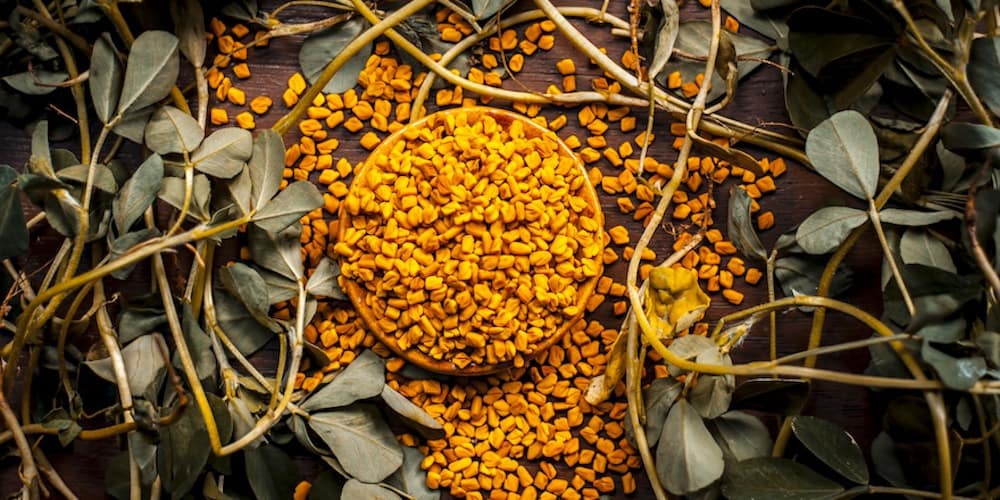{{{TEMP_MARK_23}}}
What is fenugreek?
{{{TEMP_MARK_33}}}
Fenugreek, however, has more noble uses: the inhabitants of ancient Egypt used it for embalming mummies. There’s also historical evidence in an Egyptian papyrus dating back to 1,500 B.C as a remedy for treating burns.

The plant it comes from (Trigonella foenum-graecum) is part of the Fabaceae family, like beans. It is the seeds that are consumed as a spice. Triangular in shape (which explains its name derived from ancient Greek trigonella), they have a strong odor and a characteristic, highly aromatic flavor.
In India and the Middle East, these seeds are traditionally used both in traditional medicine and cuisine. It is an ingredient in many spice mixtures or traditional dishes: Moroccan ras-el-hanout, curry, or Indian tandoori masala.
Fenugreek is a spice used in traditional pharmacopoeia, both to alleviate infections and inflammations, for its digestive virtues, and to reduce hair loss.
It is the ally of women who have just given birth, as it helps reduce pain and promote lactation. It is also a hypoglycemic spice, thus anti-diabetic, and hepatoprotective, which regulates the liver.
The phytoestrogens it contains also allow it to regulate hormones, just like maca. A powerful spice, both in terms of aroma and health benefits.
Nutritional composition of fenugreek
{{{TEMP_MARK_32}}}
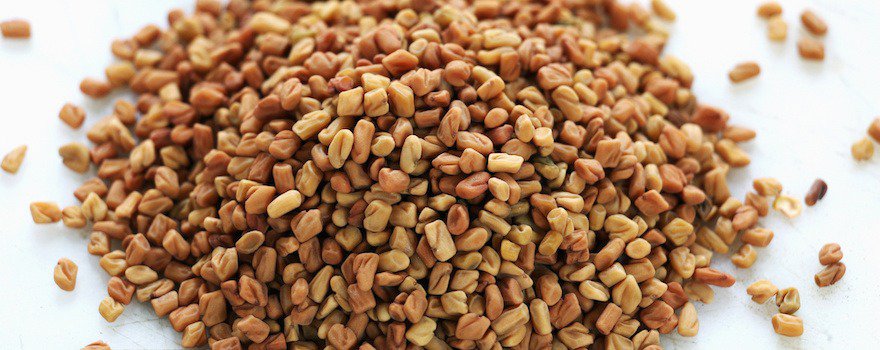
The benefits of fenugreek
🍭 Anti-diabetic virtues
Scientific research has focused on the anti-diabetic properties of fenugreek. Due to its richness in fiber and saponins, it has a regulatory effect on blood sugar levels, which may play a role in type 2 diabetes.
{{{TEMP_MARK_39}}}
Research conducted in 2009 at the University of Quebec isolated an amino acid found only in fenugreek, 4-hydroxy-isoleucine, which stimulates insulin production. This amino acid may also play a role in hypercholesterolemia by reducing cholesterol and triglyceride levels in the blood.
{{{TEMP_MARK_53}}}
{{{TEMP_MARK_31}}}
Moreover, it is an excellent galactagogue food: it stimulates milk production. Its Arabic name, helba, even comes from the word halib, milk. The ‘breastfeeding teas’ sold in stores often contain fenugreek.
Scientific studies support this traditional practice: this study, conducted in 2011 at the Ankara Faculty of Medicine with 66 women, shows that those who consumed fenugreek tea produced a higher volume of milk than those who consumed a placebo.
🔥 Boosts testosterone
Fenugreek acts on the production of sexual hormones: estrogens and testosterone.
{{{TEMP_MARK_38}}}
{{{TEMP_MARK_25}}}
This other study from the University of Mary Hardin-Baylor (USA) also conducted on 30 men showed that the consumption of fenugreek combined with physical exercise not only increased sexual desire but also helped reduce fat.
{{{TEMP_MARK_57}}}
Traditional medicine uses fenugreek to regulate appetite. Moreover, in 1990, Commission E, a German scientific body for phytotherapy, recognized its effectiveness for appetite regulation.
{{{TEMP_MARK_3}}}
Also read the How to use fenugreek to gain weight healthily?
{{{TEMP_MARK_13}}}
🌺 Hormonal Regulator
{{{TEMP_MARK_37}}}
{{{TEMP_MARK_43}}}
Additionally, its role as a hormonal booster and its richness in vitamins B1 and B3 make it an ally against hair loss, for both men and women. However, scientific studies are lacking to confirm these traditional virtues.
{{{TEMP_MARK_73}}}
A Culinary Herb
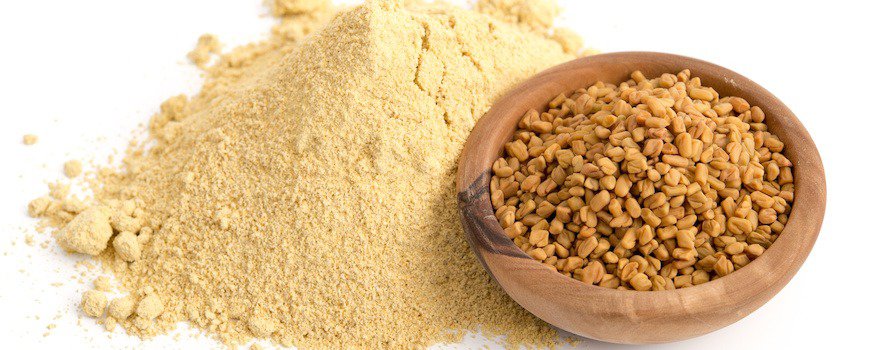
Fenugreek is a fairly hard seed, sometimes difficult to chew. It can be consumed whole, softened in water, or ground into powder. Fenugreek powder can be purchased as such to flavor dishes or to create your own spice mix for curry.
{{{TEMP_MARK_22}}}
Also read | Our guide to buying fenugreek
In India, fenugreek powder is used as a basic cooking spice. Its leaves are also consumed, like spinach.
Fenugreek as a Natural Remedy
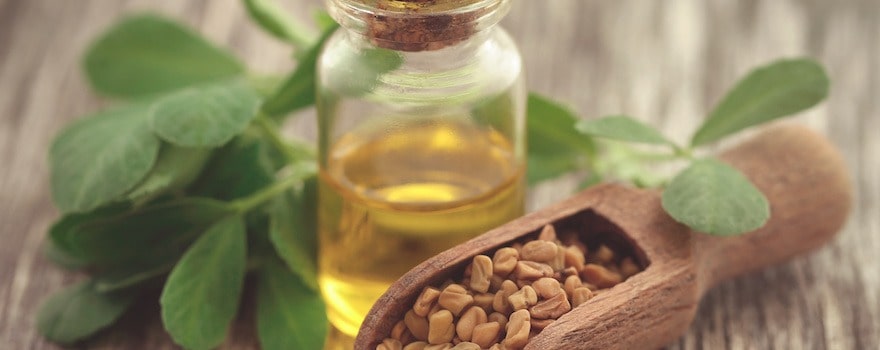
Fenugreek seeds can be infused (2 teaspoons of seeds in a cup of boiling water) to stimulate breastfeeding, appetite, or as a restorative treatment.
It is also consumed in capsules as a dietary supplement. It is generally prescribed to open the appetite or to promote weight gain.
Fenugreek oil is also available for external use, such as on the scalp or the chest.
{{{TEMP_MARK_36}}}
{{{TEMP_MARK_63}}}
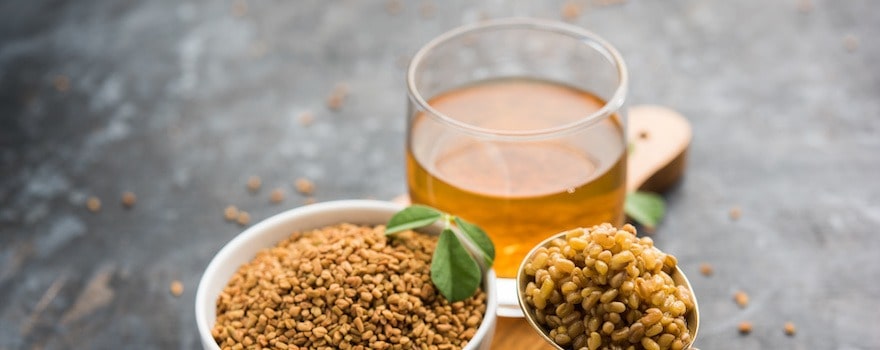
The aroma of fenugreek is very strong, so much so that it can be disturbing to some. Its scent may resemble that of celery or licorice candies. Its aroma is used in Maggi broths or Viandox, but it can also replace maple syrup in industrial preparations.
{{{TEMP_MARK_34}}}
Fenugreek Dosage
⚖️Fenugreek can be consumed occasionally as a spice. It is not necessary to use much in dishes, as its fragrance is quite strong. One to two teaspoons are enough to flavor all your recipes!
🍵In infusion: 1 teaspoon in 250 ml of water. Do not exceed three cups a day.
💊In capsules: Seek professional advice before consuming. You can take 6 fenugreek capsules per day, 2 before each meal.
⏳In treatment: The optimal duration is two months. The seeds can be consumed whole or as a dietary supplement.
🥃Fenugreek oil can be consumed internally as a table oil or externally on targeted areas. For external use, fenugreek seed poultices can also be made (boil 50g of fenugreek in 250 ml of water): the paste that will form can be applied to the skin for 30 minutes to 1 hour.
Contraindications and side effects
{{{TEMP_MARK_35}}}
- Diabetics should avoid consuming it without medical advice, especially if they are undergoing treatment to regulate insulin production: the seeds may interact with the treatment and cause imbalances.
- When consumed in high doses, its high fiber content can cause temporary intestinal issues.
{{{TEMP_MARK_67}}}

Fenugreek is cultivated and consumed throughout the Mediterranean basin and the Middle East, reaching Asia. Its largest global producer is currently India, particularly Rajasthan. This country is also the world’s largest consumer, but it exports a lot to Western countries.
In North Africa, where it originates, the spice is deeply rooted in the culture. The prophet Muhammad is said to have spoken of it thus: “Fenugreek revives and strengthens the heart. If my community knew everything that fenugreek contains, they would buy it by its weight in gold ”.
Le fenugrec est connu en France depuis le Moyen-Âge, surtout sous le nom de trigonelle ou sénégrain. Il est utilisé comme épice, mais aussi comme plante tinctoriale – il teint en rouge, et comme remède naturel. Il est inscrit à la Pharmacopée française depuis le 17ème century.
This plant can be cultivated in France, preferably south of the Loire as it likes the sun. Its cultivation is annual, and farmers use it particularly as forage or green manure. It can be planted in crop rotations after grain sowing, for example. It is a crop good for the environment because fertilization is not necessary, it fixes atmospheric nitrogen.
Detailed nutritional values
{{{TEMP_MARK_30}}}
| Fenugreek (seeds) | /100g | %DV* | {{{TEMP_MARK_82}}} | %DV |
| Energy (kcal) | 350 | 17.5 | 17.5 | 0.88 |
| Fiber (g) | {{{TEMP_MARK_130}}} | 82 | {{{TEMP_MARK_131}}} | {{{TEMP_MARK_191}}} |
| Water (g) | {{{TEMP_MARK_132}}} | {{{TEMP_MARK_203}}} | {{{TEMP_MARK_133}}} | {{{TEMP_MARK_203}}} |
| Macronutrients | ||||
| Protein (g) | {{{TEMP_MARK_134}}} | {{{TEMP_MARK_135}}} | {{{TEMP_MARK_136}}} | {{{TEMP_MARK_137}}} |
| Carbohydrates (g) | {{{TEMP_MARK_138}}} | 13 | {{{TEMP_MARK_139}}} | 0.65 |
| {{{TEMP_MARK_103}}} | 8.7 | 9.67 | 0.44 | {{{TEMP_MARK_143}}} |
| Fats (g) | 6.41 | 9.16 | 0.32 | 0.46 |
| {{{TEMP_MARK_83}}} | ||||
| Calcium (mg) | {{{TEMP_MARK_193}}} | 22 | 8.8 | 1.1 |
| Iron (mg) | 33.5 | 239.29 | 1.68 | 11.96 |
| Copper (mg) | 1.11 | 111 | 0.06 | 5.55 |
| Magnesium (mg) | 191 | 50.93 | {{{TEMP_MARK_153}}} | 2.55 |
| Manganese (mg) | {{{TEMP_MARK_131}}} | 61.5 | 0.06 | 3.08 |
| Phosphorus (mg) | 296 | {{{TEMP_MARK_122}}} | 14.8 | 2.11 |
| Potassium (mg) | 770 | 38.5 | 38.5 | {{{TEMP_MARK_163}}} |
| {{{TEMP_MARK_111}}} | 67 | 2.68 | 3.35 | 0.13 |
| Salt (g) | {{{TEMP_MARK_167}}} | 2.83 | 0.01 | 0.14 |
| {{{TEMP_MARK_113}}} | 2.5 | 25 | 0.13 | 1.25 |
| Vitamins | ||||
| Vitamin A (mg) | {{{TEMP_MARK_203}}} | {{{TEMP_MARK_203}}} | {{{TEMP_MARK_203}}} | {{{TEMP_MARK_203}}} |
| Vitamin C (mg) | 3 | {{{TEMP_MARK_173}}} | 0.15 | 0.19 |
| Vitamin D (µg) | ||||
| Vitamin E (mg) | {{{TEMP_MARK_203}}} | {{{TEMP_MARK_203}}} | {{{TEMP_MARK_203}}} | {{{TEMP_MARK_203}}} |
| Vitamin B1 (mg) | 0.32 | {{{TEMP_MARK_123}}} | 0.02 | 1.45 |
| Vitamin B2 (mg) | 0.37 | 26.43 | 0.02 | 1.32 |
| {{{TEMP_MARK_93}}} | {{{TEMP_MARK_182}}} | {{{TEMP_MARK_125}}} | {{{TEMP_MARK_183}}} | 0.51 |
| Vitamin B5 (mg) | {{{TEMP_MARK_203}}} | {{{TEMP_MARK_203}}} | {{{TEMP_MARK_203}}} | {{{TEMP_MARK_203}}} |
| Vitamin B6 (mg) | 0.6 | 42.86 | 0.03 | 2.14 |
| Vitamin B9 or folate (µg) | 57 | 28.5 | 2.85 | 1.43 |
| Vitamin B12 (µg) | {{{TEMP_MARK_203}}} | {{{TEMP_MARK_203}}} | {{{TEMP_MARK_203}}} | {{{TEMP_MARK_203}}} |
| Vitamin K (μg) | {{{TEMP_MARK_203}}} | {{{TEMP_MARK_203}}} | {{{TEMP_MARK_203}}} | {{{TEMP_MARK_203}}} |
*%DRI: % Daily Reference Intake for an adult
Antioxidants: flavonoids, saponins
Other compounds: 4-hydroxy-isoleucine
Report compiled by Pauline Petit and Charlotte Jean
Sources and scientific studies
Basch E, Ulbricht C, Kuo G, Szapary P, Smith M, 2003. Therapeutic applications of fenugreek.
Jetté L, Harvey L, Eugeni K, Levens N, 2009. 4-Hydroxyisoleucine: a plant-derived treatment for metabolic syndrome.
Turkyılmaz C, Onal E, Hirfanoglu IM, Turan O, Koç E, Ergenekon E, Atalay Y, 2011. The effect of galactagogue herbal tea on breast milk production and short-term catch-up of birth weight in the first week of life.
Steels E, Rao A, Vitetta L, 2011. Physiological aspects of male libido enhanced by standardized Trigonella foenum-graecum extract and mineral formulation.
Wilborn C, Taylor L, Poole C, Foster C, Willoughby D, Kreider R, 2010. Effects of a purported aromatase and 5α-reductase inhibitor on hormone profiles in college-age men.
Chevassus H, Molinier N, Costa F, Galtier F, Renard E, Petit P, 2009. A fenugreek seed extract selectively reduces spontaneous fat consumption in healthy volunteers.
U.S. Department of Agriculture, Agricultural Research Service (2014). USDA National Nutrient Database for Standard Reference, Release 27. Nutrient Data Laboratory Home Page, http://www.ars.usda.gov/ba/bhnrc/ndl
4-Hydroxyisoleucine: a plant-derived treatment for metabolic syndrome. Jetté L, Harvey L, et al. Curr Opin Investig Drugs. 2009 Apr;10(4):353-8. Review.
Narender T, Puri A, et al. 4-hydroxyisoleucine an unusual amino acid as antidyslipidemic and antihyperglycemic agent. Bioorg Med Chem Lett. 2006 Jan 15;16(2):293-6.
Barnes Joan, Anderson A. Linda, Phillipson David J. Herbal Medicines, Pharmaceutical Press, United Kingdom, 2007, 3rd edition.
Natural Standard (Ed). Herbs & Supplements – Fenugreek, Nature Medicine Quality Standard. www.naturalstandard.com
The Natural Pharmacist (Ed). Natural Products Encyclopedia, Herbs & Supplements – Fenugreek, ConsumerLab.com.


